(Carbethoxymethyl)triphenylphosphonium bromide
Synonym(s):(Carboxymethyl)triphenylphosphonium bromide ethyl ester;NSC 60450
- CAS NO.:1530-45-6
- Empirical Formula: C22H22BrO2P
- Molecular Weight: 429.29
- MDL number: MFCD00011835
- EINECS: 216-230-1
- SAFETY DATA SHEET (SDS)
- Update Date: 2025-01-27 09:38:02
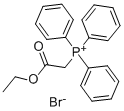
What is (Carbethoxymethyl)triphenylphosphonium bromide?
Chemical properties
WHITE CRYSTALLINE POWDER
The Uses of (Carbethoxymethyl)triphenylphosphonium bromide
suzuki reaction
The Uses of (Carbethoxymethyl)triphenylphosphonium bromide
(Ethoxycarbonylmethyl)triphenylphosphonium bromide, is used as a pharmaceutical intermediate.
Purification Methods
Wash it with pet ether (b 40-50o) and recrystallise it from CHCl3/Et2O and dry it in a high vacuum at 65o. [Isler et al. Helv Chim Acta 40 1242 1957, Wittig & Haag Chem Ber 88 1654, 1664 1955.]
Properties of (Carbethoxymethyl)triphenylphosphonium bromide
| Melting point: | 145-150 °C (dec.) (lit.) |
| storage temp. | Inert atmosphere,Room Temperature |
| solubility | Chloroform (Slightly), Methanol (Slightly) |
| form | Crystalline Powder |
| color | White |
| Water Solubility | It is soluble in water. |
| Sensitive | Hygroscopic |
| BRN | 3581273 |
| CAS DataBase Reference | 1530-45-6(CAS DataBase Reference) |
Safety information for (Carbethoxymethyl)triphenylphosphonium bromide
| Signal word | Warning |
| Pictogram(s) |
 Exclamation Mark Irritant GHS07 |
| GHS Hazard Statements |
H315:Skin corrosion/irritation H319:Serious eye damage/eye irritation H335:Specific target organ toxicity, single exposure;Respiratory tract irritation |
| Precautionary Statement Codes |
P261:Avoid breathing dust/fume/gas/mist/vapours/spray. P264:Wash hands thoroughly after handling. P264:Wash skin thouroughly after handling. P280:Wear protective gloves/protective clothing/eye protection/face protection. P304+P340:IF INHALED: Remove victim to fresh air and Keep at rest in a position comfortable for breathing. P305+P351+P338:IF IN EYES: Rinse cautiously with water for several minutes. Remove contact lenses, if present and easy to do. Continuerinsing. P405:Store locked up. |
Computed Descriptors for (Carbethoxymethyl)triphenylphosphonium bromide
(Carbethoxymethyl)triphenylphosphonium bromide manufacturer
New Products
Indole Methyl Resin tert-butyl 9-methoxy-3-azaspiro[5.5]undecane-3-carboxylate Boc-His(Boc)-OH 2-CTC Resin 4-Chloro-7-tosy1-7Hpyrrolo[2,3-d]pyrimidine 5,7-Dibromo-1H-indole 2,5-dichloro-N-hydroxy-4,6-dimethylpyridine-3-carboximidamide 2,2-Dimethoxy-7-azaspiro[3.5]nonane hydrochloride 4-chloromethyl-5-methyl-1,3-dioxol-2-one (DMDO-Cl) R-2-BENZYLOXY PROPIONIC ACID 1,1’-CARBONYLDIIMIDAZOLE 1,1’-CARBONYLDI (1,2-4 TRIAZOLE) N-METHYL INDAZOLE-3-CARBOXYLIC ACID 4-((2-hydroxyethyl)thio)benzoic acid 1-(TERT-BUTOXYCARBONYL)-2-PYRROLIDINONE Methyl 6-methylnicotinate 3-Pyridineacrylic acid tert-Butyl carbazate TETRAHYDRO-2H-PYRAN-3-OL 2-((4-morpholinophenylamino) (methylthio) methylene) malononitrile 3-(4-morpholinophenylamino)-5-amino-1H-pyrazole-4-carbonitrile 2,4-dihydroxybenzaldehyde 1,3-Diethyl-1,3-Diphenylurea Methyl 2-methylquinoline-6-carboxylateRelated products of tetrahydrofuran
![[1-(Ethoxycarbonyl)ethyl]triphenylphosphonium bromide](https://img.chemicalbook.in/CAS/GIF/30018-16-7.gif)
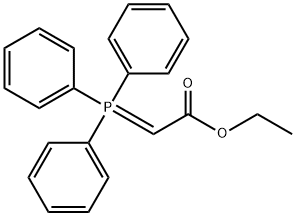


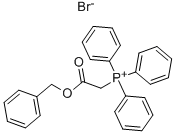
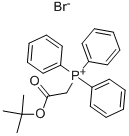
![(CARBETHOXYMETHYL)TRIPHENYLPHOSPHONIUM BROMIDE, [1,2-13C2]](https://img.chemicalbook.in/CAS/GIF/109376-35-4.gif)
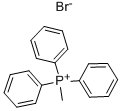
You may like
-
 1530-45-6 (Carbethoxymethyl)triphenyl Phosphonium Bromide 99%View Details
1530-45-6 (Carbethoxymethyl)triphenyl Phosphonium Bromide 99%View Details
1530-45-6 -
 1530-45-6 99%View Details
1530-45-6 99%View Details
1530-45-6 -
 1530-45-6 99%View Details
1530-45-6 99%View Details
1530-45-6 -
 Ethoxycarbonylmethyl(triphenyl)phosphonium Bromide CAS 1530-45-6View Details
Ethoxycarbonylmethyl(triphenyl)phosphonium Bromide CAS 1530-45-6View Details
1530-45-6 -
 (Carboethoxymethyl)triphenylphosphonium bromide, 98% CAS 1530-45-6View Details
(Carboethoxymethyl)triphenylphosphonium bromide, 98% CAS 1530-45-6View Details
1530-45-6 -
 (Ethoxycarbonylmethyl)triphenylphosphonium bromide CAS 1530-45-6View Details
(Ethoxycarbonylmethyl)triphenylphosphonium bromide CAS 1530-45-6View Details
1530-45-6 -
 1530-45-6 98%View Details
1530-45-6 98%View Details
1530-45-6 -
 ETHOXYCARBONYLMETHYLTRIPHENYL PHOSPHONIUM BROMIDE(WITTIG SALT)View Details
ETHOXYCARBONYLMETHYLTRIPHENYL PHOSPHONIUM BROMIDE(WITTIG SALT)View Details
1779-49-3
Statement: All products displayed on this website are only used for non medical purposes such as industrial applications or scientific research, and cannot be used for clinical diagnosis or treatment of humans or animals. They are not medicinal or edible.
